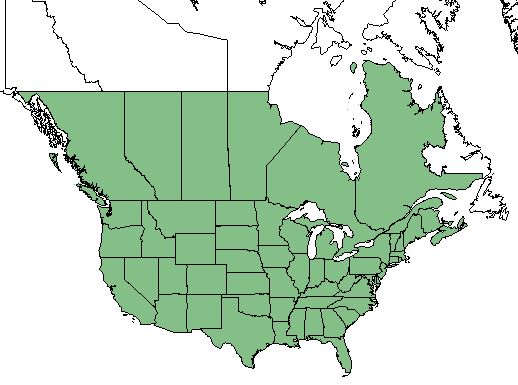Difference between revisions of "Panicum capillare"
(→Conservation and Management) |
|||
| Line 1: | Line 1: | ||
{{italic title}} | {{italic title}} | ||
| + | Common Names: witchgrass <ref name= "USDA"> [https://plants.usda.gov/core/profile?symbol=CEAM USDA Plant Database]</ref> | ||
<!-- Get the taxonomy information from the NRCS Plants database --> | <!-- Get the taxonomy information from the NRCS Plants database --> | ||
{{taxobox | {{taxobox | ||
Revision as of 17:11, 18 June 2018
Common Names: witchgrass [1]
| Panicum capillare | |
|---|---|

| |
| Photo by John Hilty hosted at IllinoisWildflowers.info | |
| Scientific classification | |
| Kingdom: | Plantae |
| Division: | Magnoliophyta - Flowering plants |
| Class: | Liliopsida – Monocotyledons |
| Order: | Poales |
| Family: | Poaceae |
| Genus: | Panicum |
| Species: | P. capillare |
| Binomial name | |
| Panicum capillare L. | |

| |
| Natural range of Panicum capillare from USDA NRCS Plants Database. | |
Contents
Taxonomic Notes
Synonym: P. capillare var. occidentale (Rydberg)
Variety: none
Description
P. capillare is an annual graminoid of the Poaceae family that is native to North America.[1]
Distribution
P. capillare is found throughout the entirety of the Continental United States and the southern half of Canada. [1]
Ecology
Habitat
Considered a weed in cultivated soils, the common habitats for P. capillare include open sandy pr stony soils, fields, roadsides, and waste places. [2]
Phenology
P. capillare briefly flowers in October and November. [3]
Conservation and Management
P. capillare is considered weedy or invasive depending on the authority involved. [1]